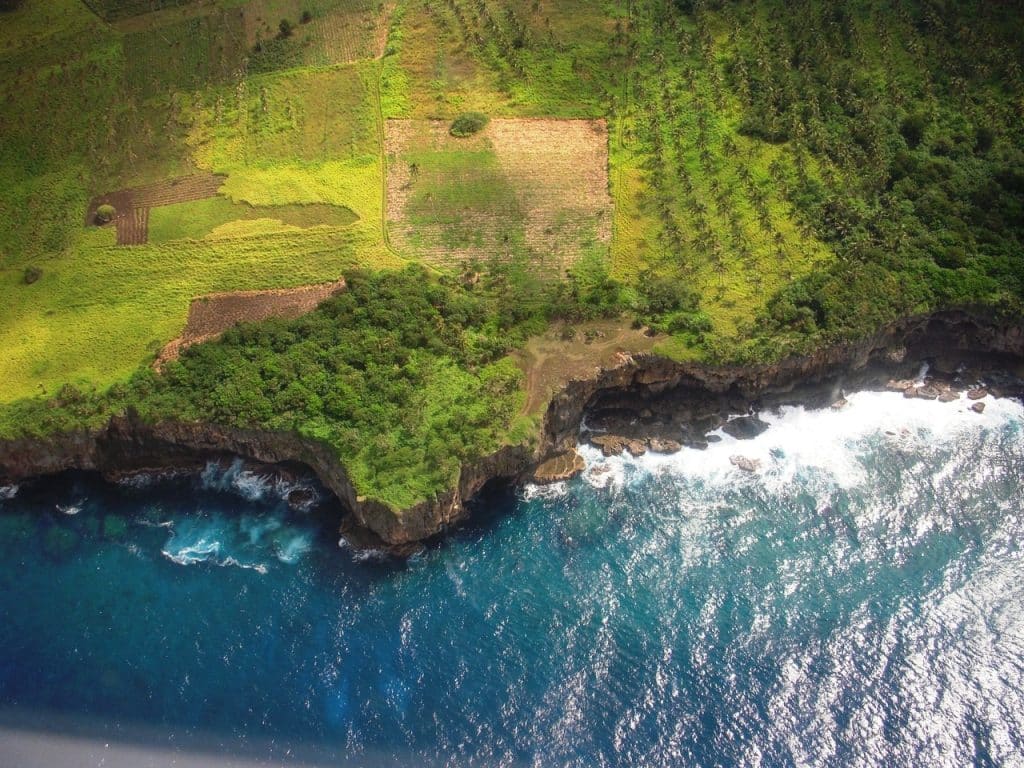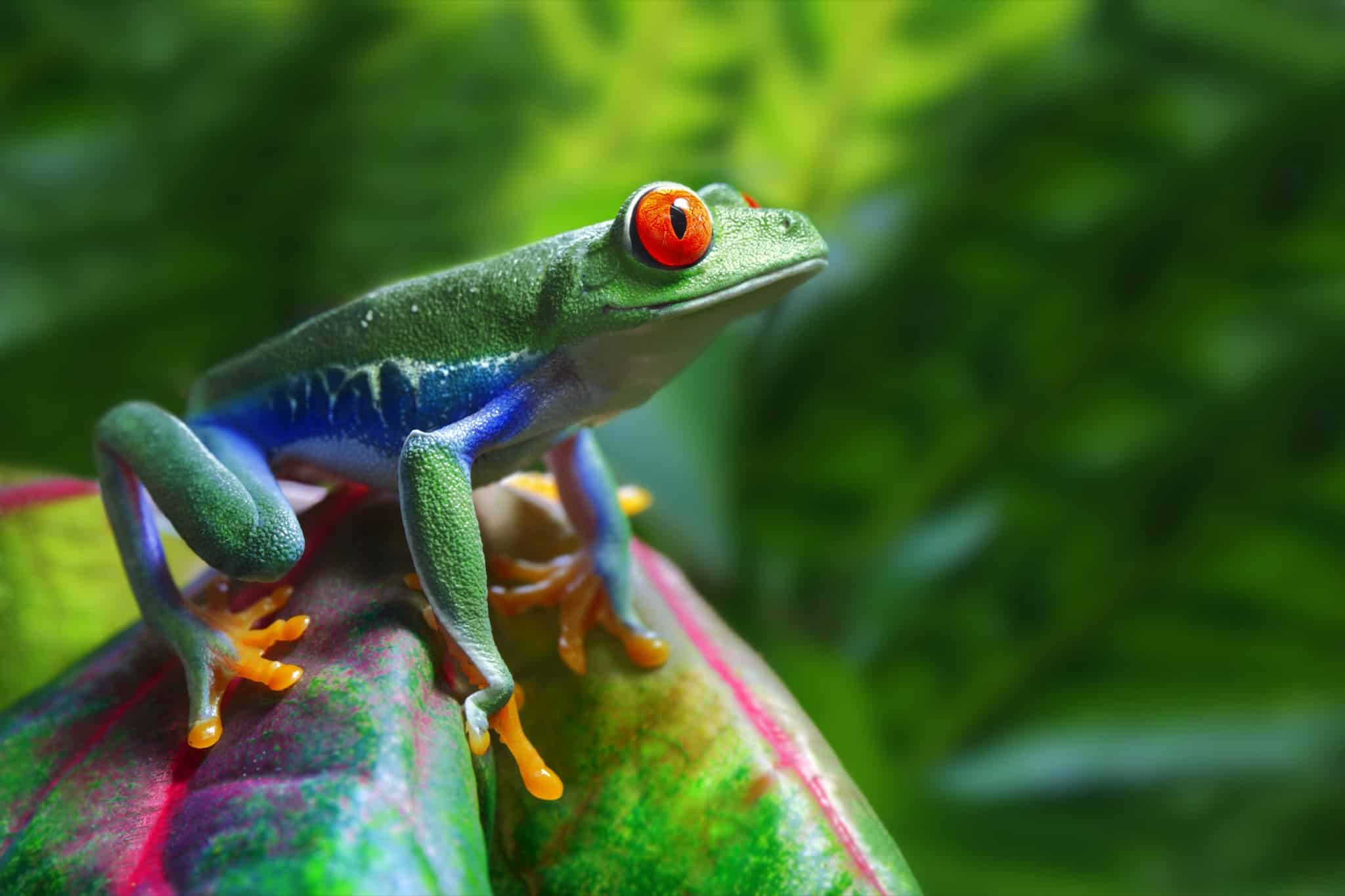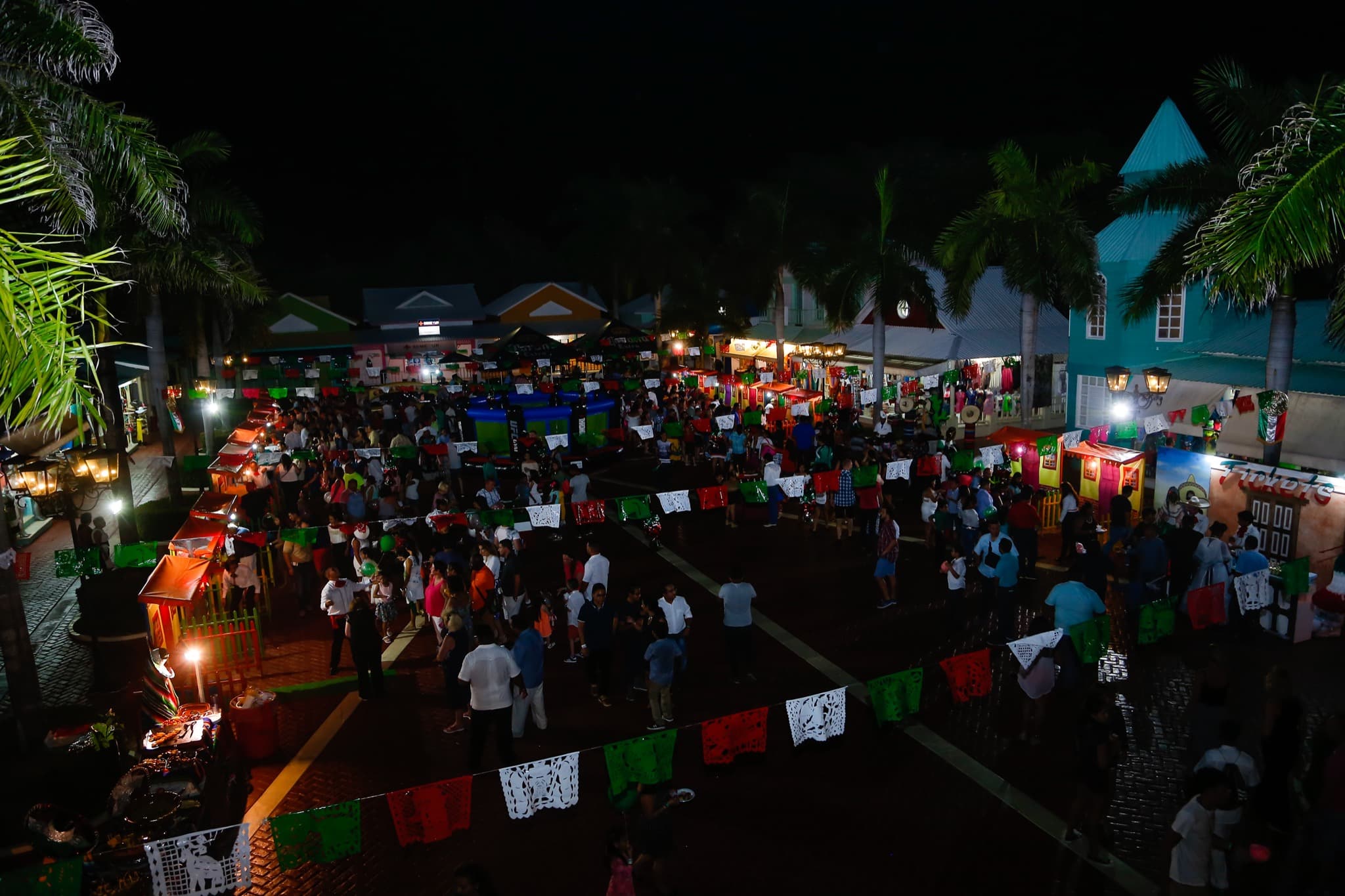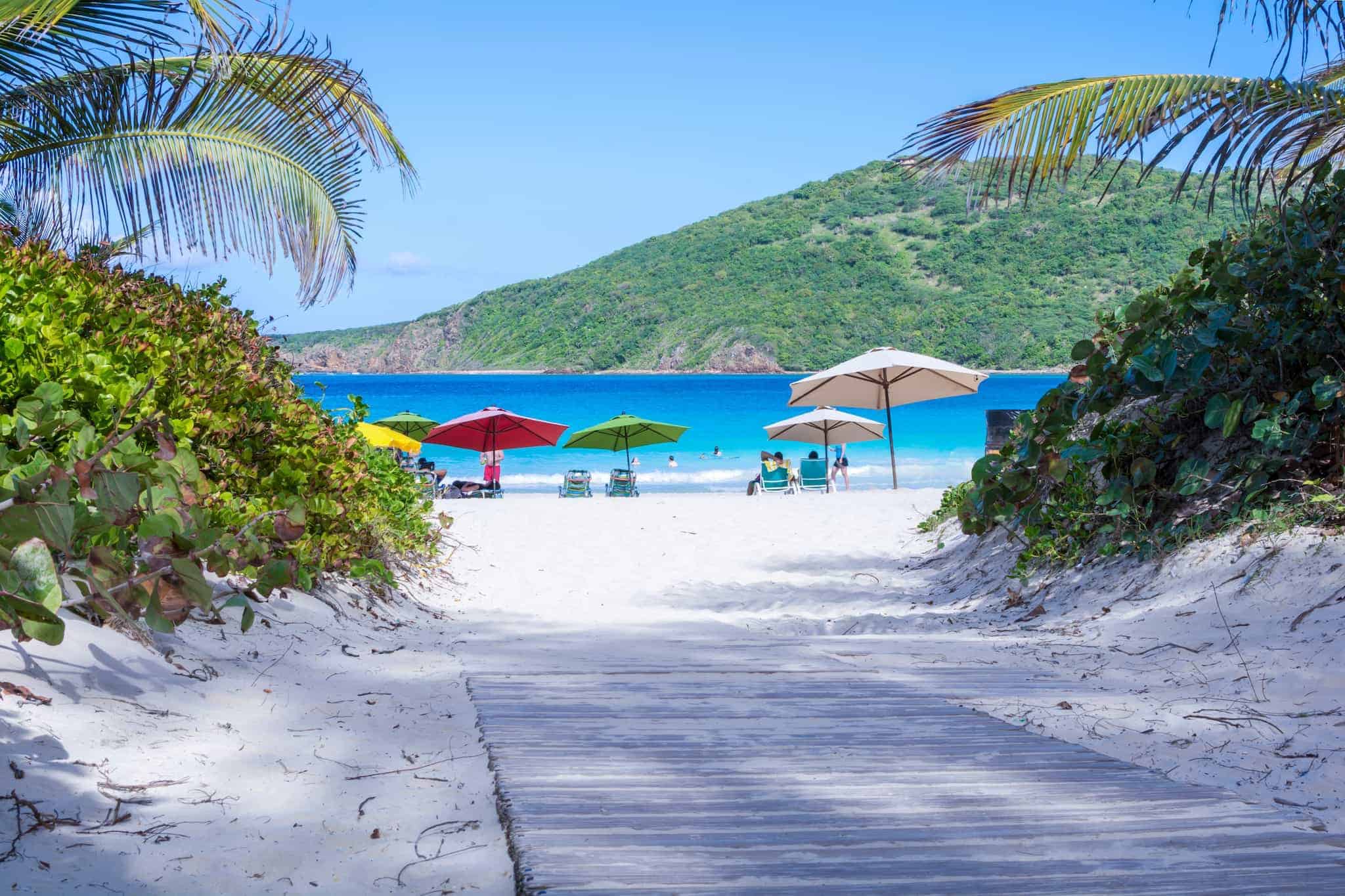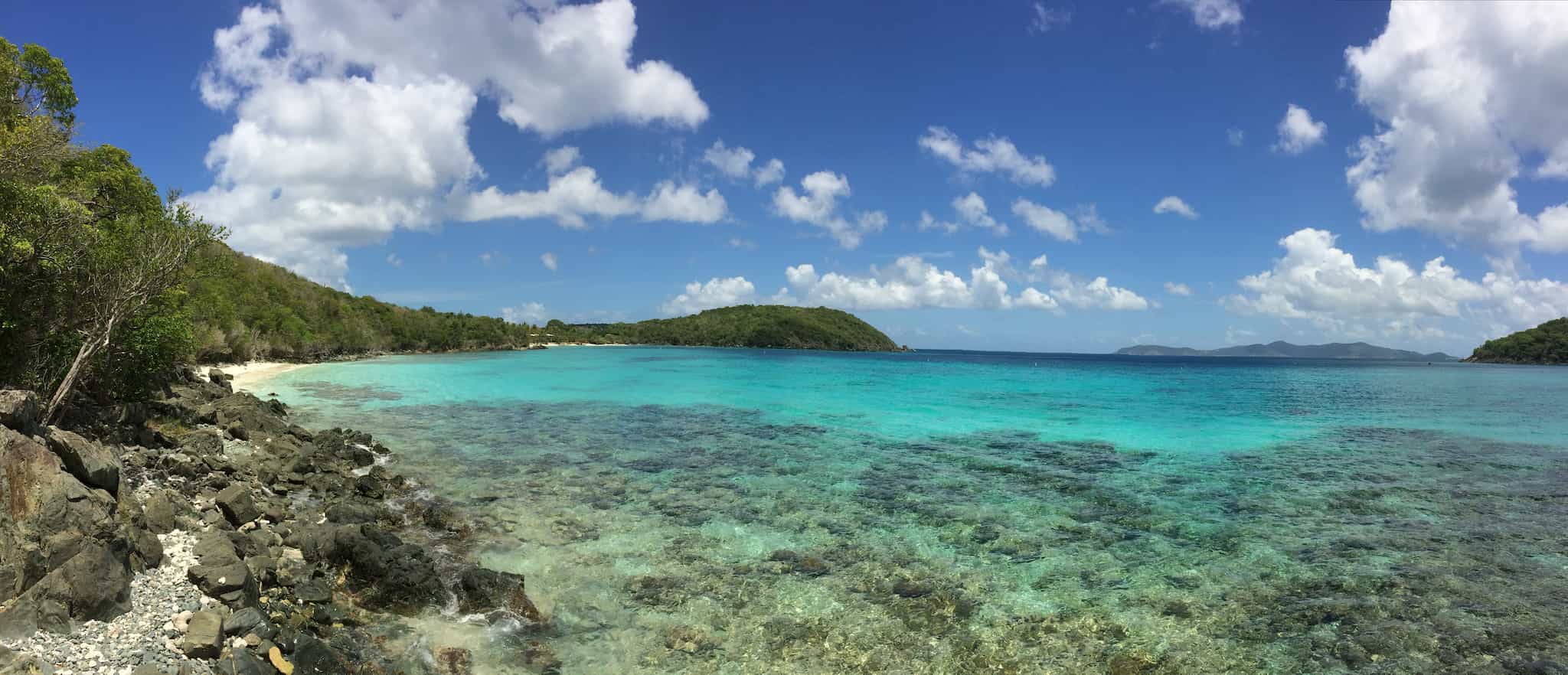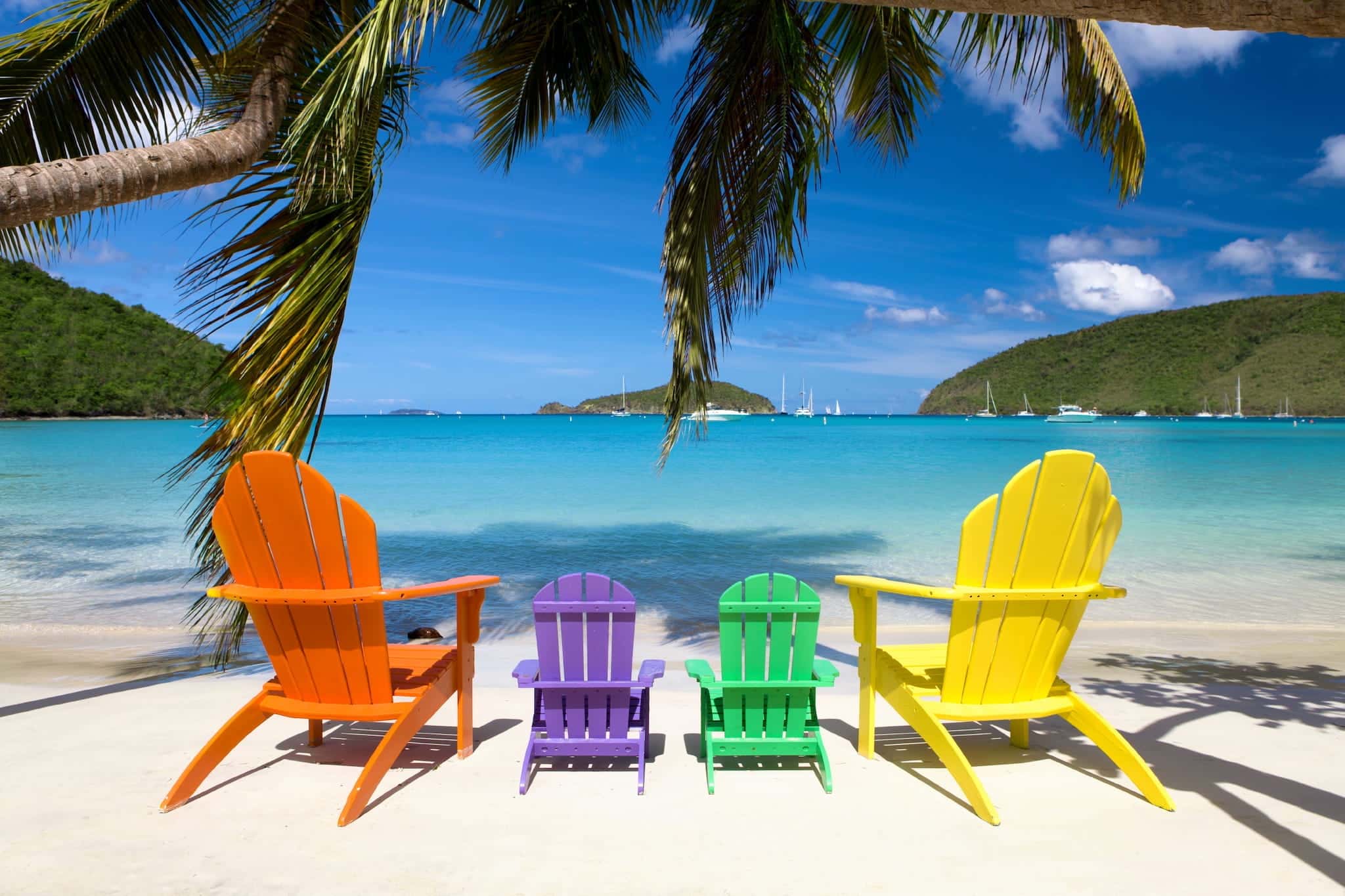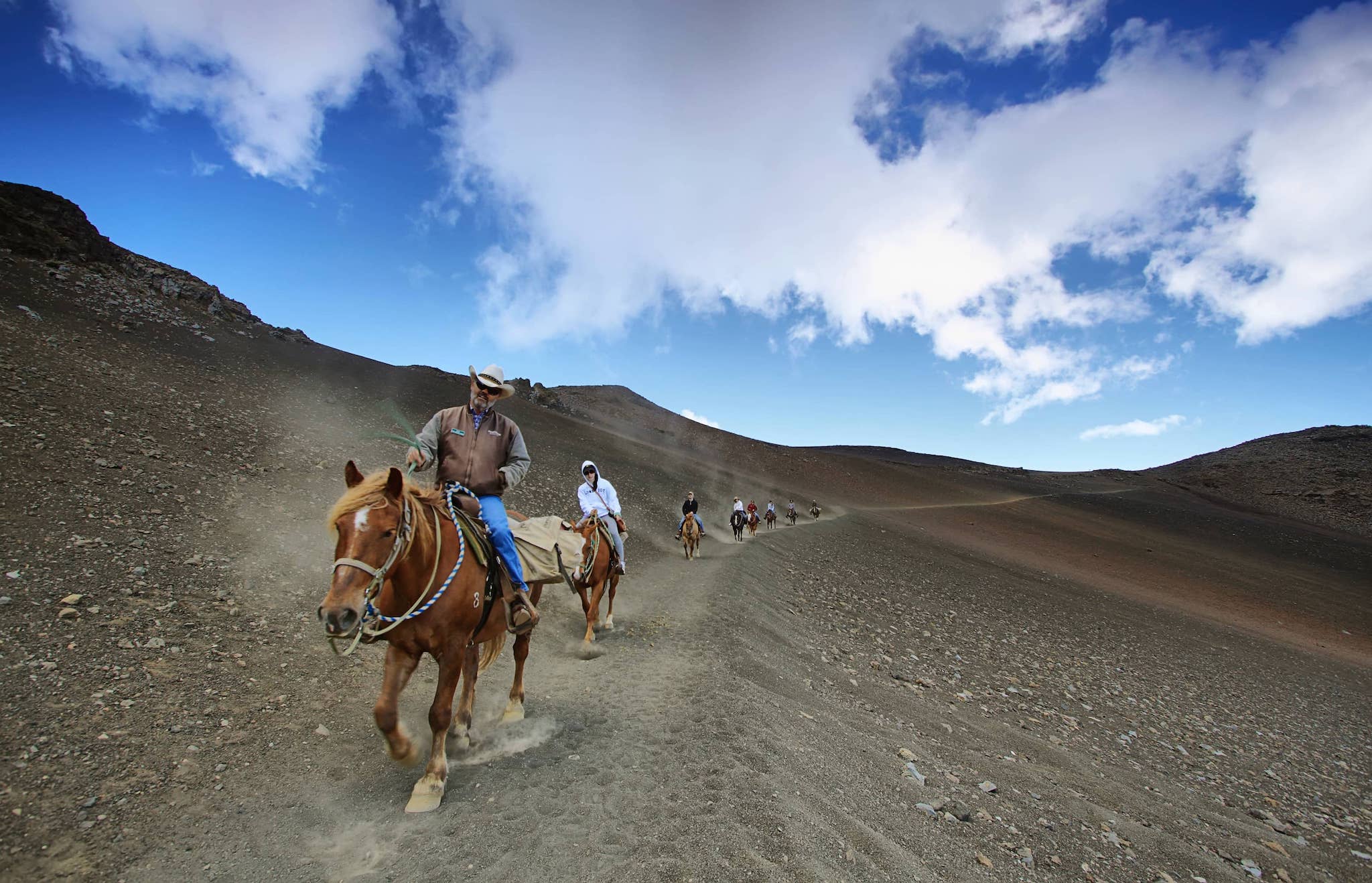On April 22, the natural world takes center stage as humans around the globe are asked to pause to reflect on the importance of protecting and enhancing the ecosystems we share with all other living creatures. Famed ecologist and author Rachel Carson writes that “Those who contemplate the beauty of the earth find reserves of strength that will endure as long as life lasts. There is something infinitely healing in the repeated refrains of nature — the assurance that dawn comes after night, and spring after winter.” Here, a colorful little, red-eyed tree frog from the rainforests of Costa Rica serves as a visual reminder of the diverse, beautiful, and sometimes fragile nature of the planet Earth and its inhabitants.
Forever Wild
Seen from above, the shores of Sandy Cay are a study in the primary colors of green, white, and blue. This small island in the British Virgin Islands was once privately owned by philanthropist Laurance Rockefeller. During his ownership, a conservation management team planted over 200 palm trees, created bird and turtle monitoring programs, and developed a trail network across the 13.57-acre island. Sandy Cay will now remain forever wild and unspoiled, thanks to its designation as a national park and the creation of a marine protected area zoning that includes surrounding coral reefs and shallows. And to the delight of many, protection doesn’t mean exclusion. Visitors can arrive by boat and are welcome to walk the pristine sands and swim in the clear waters.
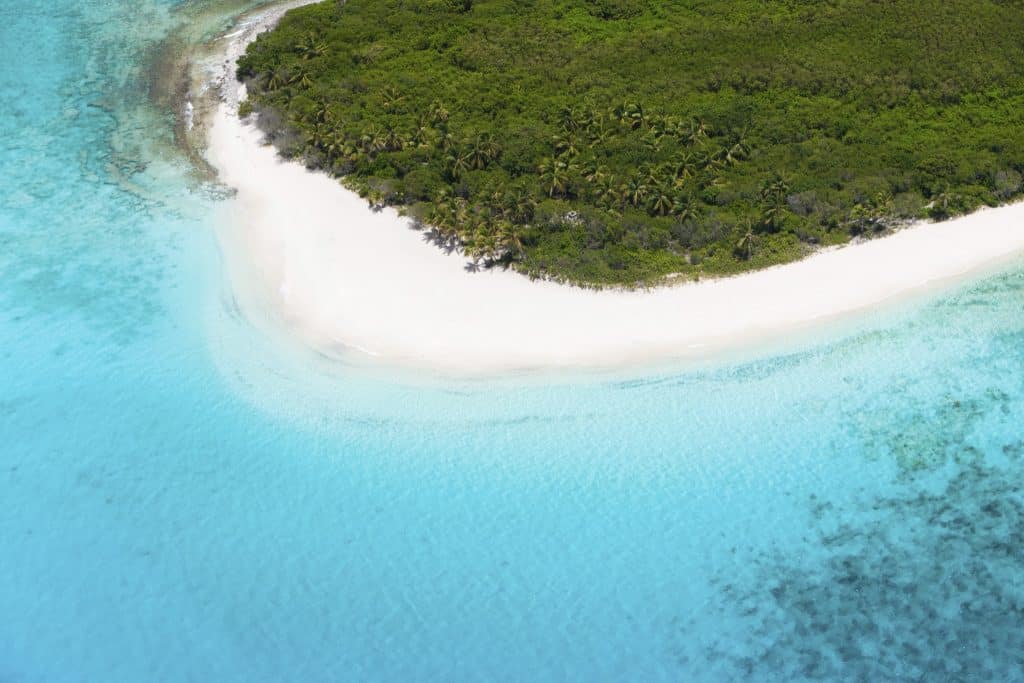
Liquid Assets
In the bright azure waters of Curacao, a sea turtle glides in for a closer look at the camera. These hard-shelled swimmers are actually reptiles, not amphibians. They have to come up for air every so often, but can hold their breath for 20 minutes or more. It’s been three decades since a large section of Curacao’s southern coast was designated as an underwater marine park. This conservation effort has paid off handsomely, and today, the vibrant reefs and abundant fish life continue to attract divers from around the world. This creates a sustainable economy based on eco-tourism and serves as proof that the protection of natural resources can pay real dividends.
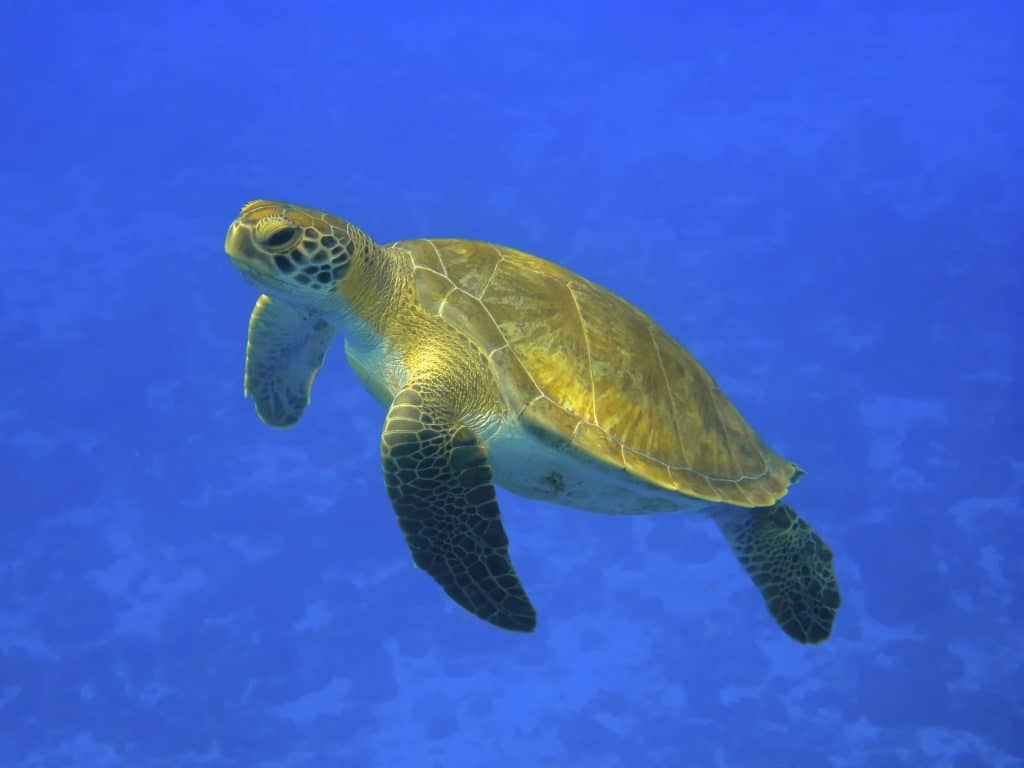
Natural Benefits
On the island of Dominica, a swimmer is dwarfed by volcanic boulders and a thundering cascade. A majority of the island remains in a natural state, and some 360 rivers and streams flow from the rugged forested peaks that gather moisture from trade wind clouds. There are no large-scale developments or high-rise hotels on Dominica, and visitors instead choose intimate eco-lodges and boutique resorts. Family-owned organic gardens scattered through the hills supply rich harvests of fresh foods to create farm-to-table dining experiences. The people of Dominica have been identified as among the longest-lived and happiest in the world. Proof, perhaps, that living close to nature can pay dividends in both physical and mental well-being.
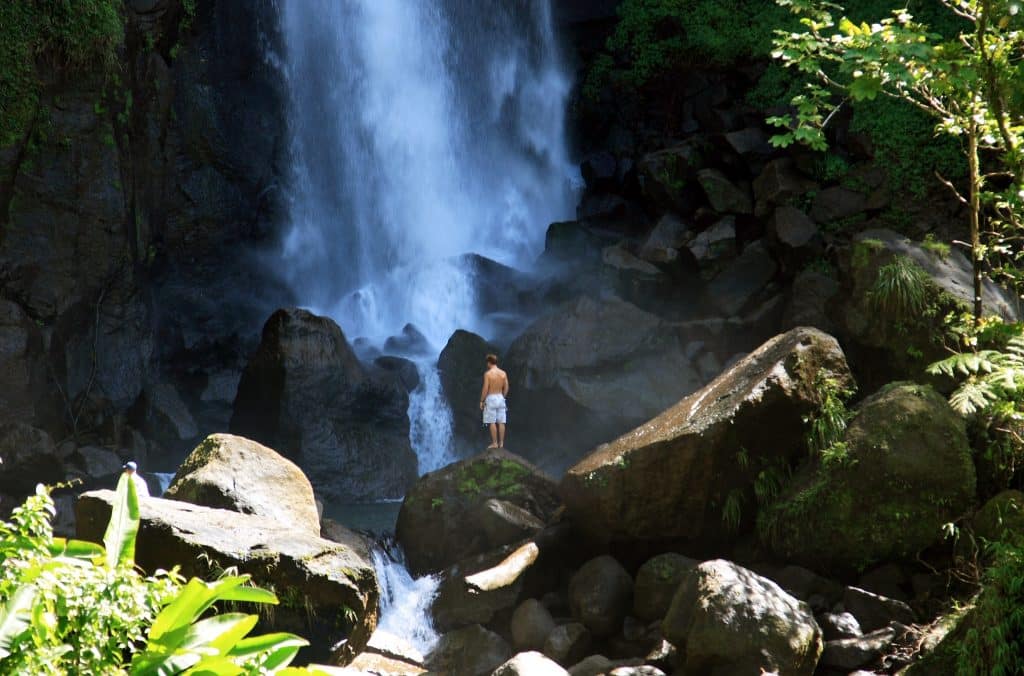
Springing Back
Not too long ago, it seemed that the West Indian Manatee was destined for extinction. Sweeping conservation efforts in the state of Florida that included the Sanctuary Act of 1978 made it illegal to feed, harass, harm, pursue, hunt, shoot, wound, kill, annoy, or molest manatees. These protections, combined with growing public awareness, halted and then reversed the species’ decline. Today Florida’s manatee population is on the rebound and off the endangered species list. Swimmers who abide by accepted rules of engagement can meet up with these gentle giants, which often spend winter months resting in the clear waters of the state’s freshwater springs and noshing on aquatic vegetation.
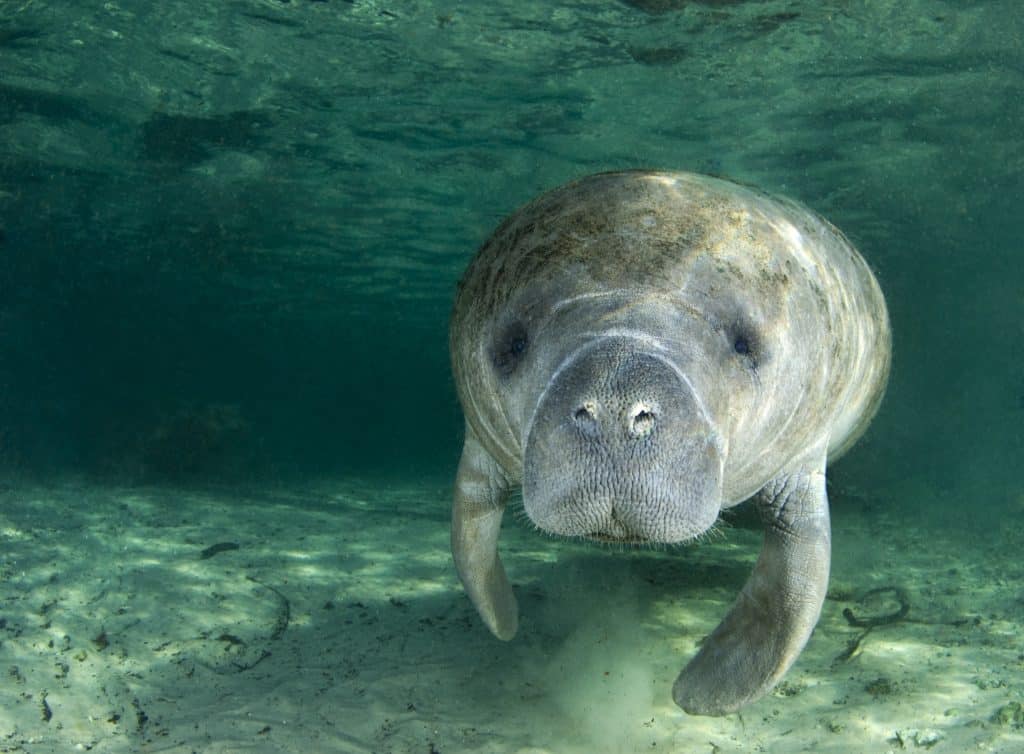
The Big Picture
When we find ourselves immersed in dramatic and awe-inspiring natural settings such as this panoramic vista of Hawaii’s Waipiʻo Valley, the trappings and challenges of our everyday life often seem to loom less large and daunting. This is the basis for nature therapy, also called ecotherapy, which is the practice of immersing oneself in natural surroundings to achieve growth, healing, and mental health. Events such as Earth Day serve to remind us of the importance of preserving these landscapes, not based on some nebulous altruistic whim, but on our understanding of the very real need to keep such places intact for human well-being and balance.
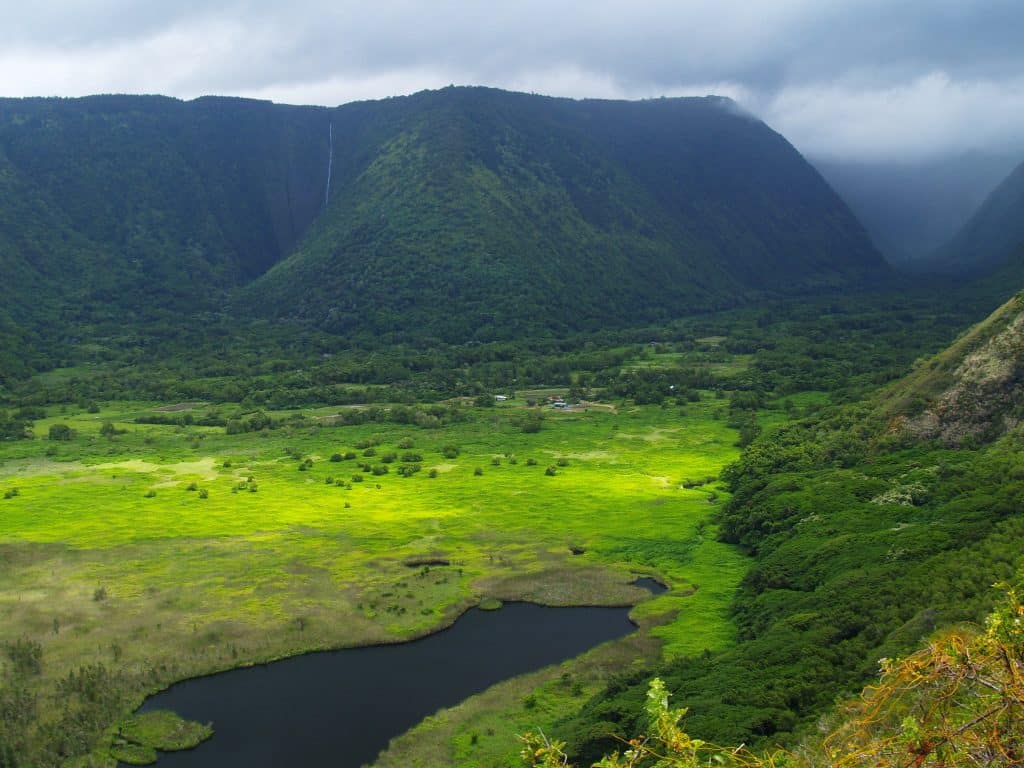
Clearing & Cooling the Air
On an island in the Maldives a thousand miles from the nearest factory, the rising sun paints clouds with a warm and vivid reminder of just how clear air can be. We owe some of this clarity to the actions of trees, which act like living air filters, removing pollutants and carbon from the atmosphere. Trees also help to keep us cool. A modest-sized tree can provide the equivalent cooling effect of a room air conditioner, while a whole forest can lower daytime air temperatures by several degrees. Each year on Earth Day, groups around the world will collectively plant more than a million new seedlings to ensure a greener future.

Nature’s Waterpark
Wind, waves, and lots of time are the elemental forces that sculpted the unique rock formations that adorn the beaches of the Seychelles Islands. These boulders are the only mid-ocean example of granite rock as the islands of the Seychelles were once part of Africa. The granite is layered with sedimentary rocks that were collected and layered when the islands were submerged in shallow water. All this happened 150 million years ago. As the world ponders the possible effects of climate change such as sea level rise and coastal erosion, it becomes increasingly obvious that we need to do everything possible to prevent unique landscapes such as this from being lost to future generations.
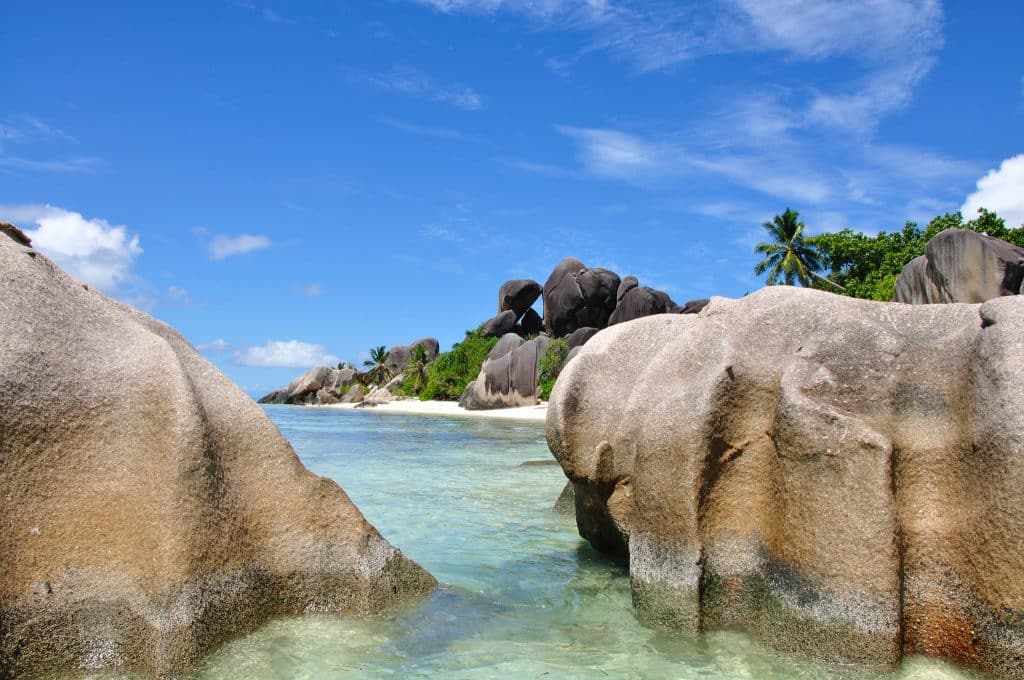
A Path to Wellness
Studies have confirmed that a walk in the woods creates a sense of calm and well-being, actually changing the workings of the human brain in ways that improve mental health. In as little as 15 minutes the mind transitions to a restful state of alpha brain waves. Time in nature can also have a positive influence on the nervous system, decreasing heart rate and blood pressure while boosting happiness and promoting serotonin. As seen in this photo, the island of St. Vincent provides a natural remedy for stressed-out city dwellers, as large areas of its interior highlands are covered in paths leading through lush tropical rainforests where the only calls you receive are bird songs.
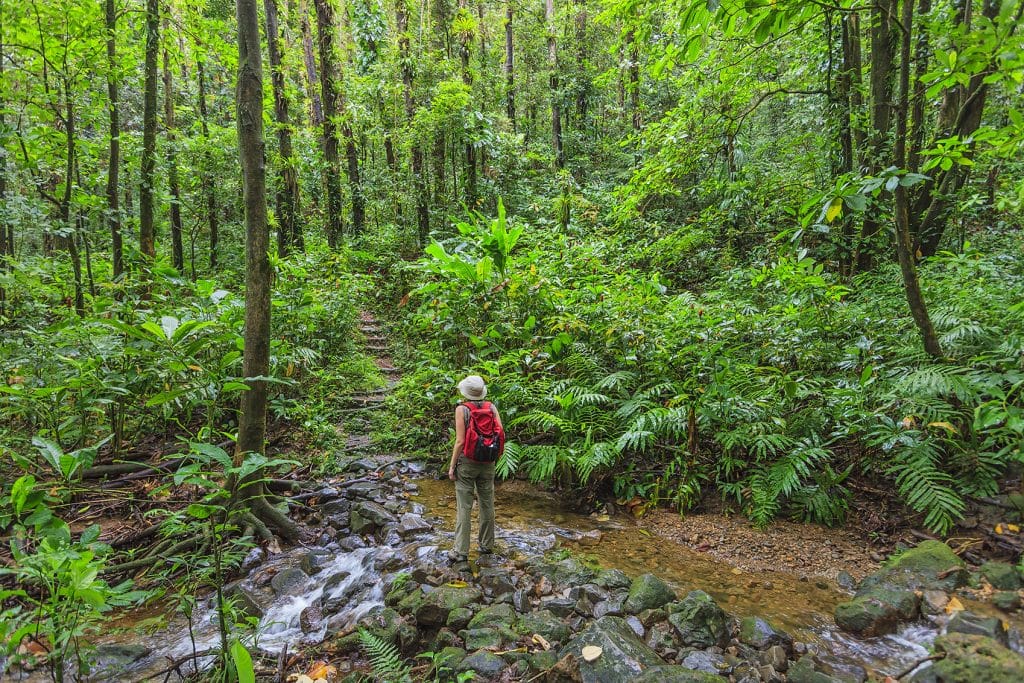
Immersive Experiences
In the sun-dappled blue waters of Tahiti, a diver joins a flock of graceful eagle rays. The deep waters that begin just outside of Tahiti’s encircling reefs also offer chances for thrilling marine life encounters with dolphins and whales. Unique and inspiring encounters such as these serve to remind us of the importance of maintaining the health of our water planet. The oceans of the world are home to more than 90 percent of all living organisms on the planet and are the source of more than 70 percent of our global oxygen supply.
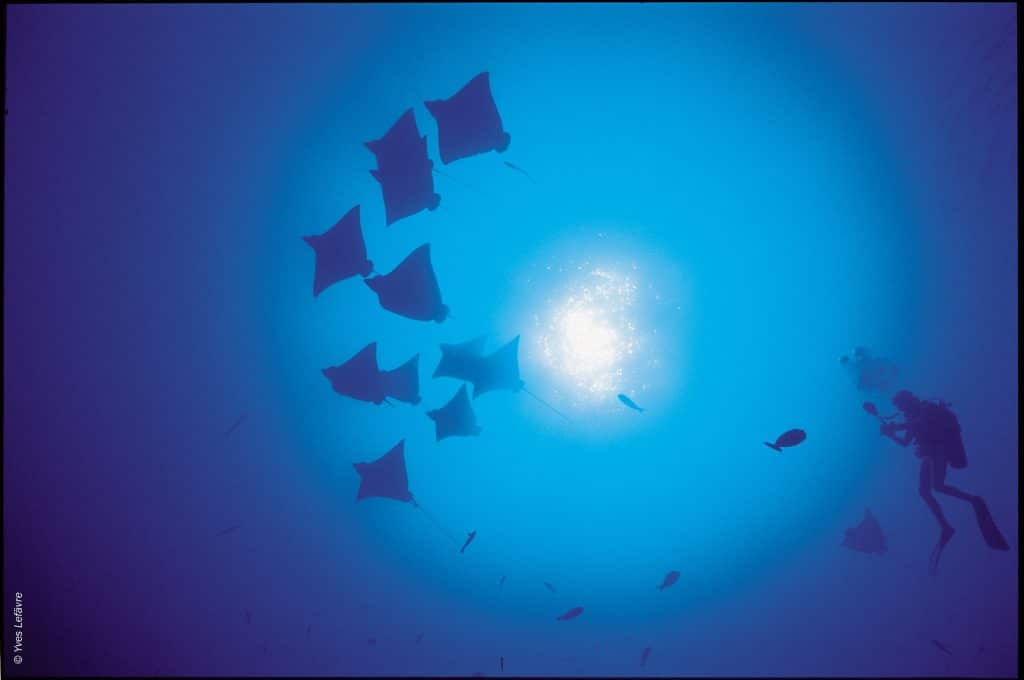
A Natural Balance
An overhead view of the coast of Tonga’s Eua Island reveals a landscape where low-impact human activities such as artisanal farming create only modest and sustainable changes to the natural order. More than 85 percent of the land area of Tonga remains covered in trees and under the protection of four national parks and a nature preserve. These protected spaces offer an oasis of biodiversity and scenic beauty, where lush tropical vegetation merges with crystal-clear waters and white sandy beaches. As high-rise resorts and gated golf course communities continue to spring up on wild coastlines around the world, it’s nice to know that there are still many places that remain off-limits to bulldozers.
